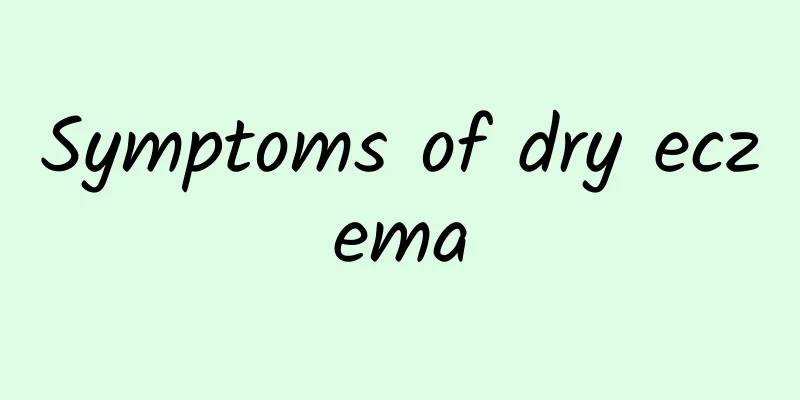What is low platelet count?

|
If the platelet content in the human body is too low, it will have a great impact on people's daily life and normal body functions. Low platelet count is a disease that is difficult to cure, and can only be gradually controlled by medication. There are many reasons that cause platelet editing. Today I will introduce to you in detail the reasons that lead to low platelets and what disease low platelets belong to. 1. Causes and common diseases: 1. Causes 1. Insufficient platelet production: It can be seen in certain pathological conditions such as aplastic anemia (AA), acute leukemia (AL) and infection, or due to the harmful effects of certain poisons or drugs such as benzene, xylene, cyclophosphamide, etc., the proliferation or growth maturation of megakaryocytes in the bone marrow is impaired, which can cause insufficient platelet production and a decrease in platelet number. 2. Excessive platelet destruction: It occurs when certain drugs such as sulfonamides, chloramphenicol, and ankipyrine are used or when there is infection. Through the immune mechanism, anti-platelet antibodies are produced in the body, resulting in excessive platelet destruction and a decrease in platelet number. It can also be seen in primary immune thrombocytopenia (ITP), disseminated intravascular coagulation (DIC), thrombotic thrombocytopenia (TTP), heparin-induced thrombocytopenia (HIT), systemic lupus erythematosus (SLE), and HIV-1-related thrombocytopenia. 3. Abnormal platelet distribution: When hypersplenism or splenomegaly is caused by various reasons, too many platelets are retained in the spleen, resulting in a decrease in the number of platelets in the blood. 2. Common diseases: When thrombocytopenia occurs, the delayed blood coagulation process, enhanced fibrinolysis and abnormal vascular permeability can easily lead to continuous bleeding. In severe cases, bleeding may occur under the skin, in the mucous membranes, in internal organs or in other tissues. This is called thrombocytopenic purpura. 2. Differential diagnosis: The general symptoms are subcutaneous and mucosal bleeding, such as skin ecchymosis, purpura, bleeding from the mouth, nose and gums, etc. Severe cases can cause massive gastrointestinal bleeding and bleeding in the central nervous system, which is life-threatening. Long-term bleeding can easily cause anemia. 3. Inspection: Routine blood test, urine test and stool test, etc. 4. Treatment principles: 1. Western medicine treatment: For the treatment of thrombocytopenia, the first step is to deal with the cause. For example, for ITP, glucocorticoids, immunoglobulin, and splenectomy can be used for treatment; for AA, immunosuppressive regimens and other treatments can be used. Platelet transfusion is mainly used to prevent and treat bleeding symptoms in patients with thrombocytopenia or platelet dysfunction, and to restore and maintain the body's normal hemostasis and coagulation functions; it is not suitable for all cases of thrombocytopenia. 2. Diet therapy: The principles of dietary therapy are mainly to replenish qi and blood, nourish yin and cool blood, and stop bleeding. The following dietary therapies are effective: 1. Ginseng and Lotus Porridge: Take 9g ginseng, 9g Eclipta prostrata, appropriate amount of sugar, and 6g polished rice. First, stew the ginseng slices, wash and boil the Eclipta prostrata, put them into the pot together with the cleaned glutinous rice, add appropriate amount of water, boil it over high heat first, then simmer it into porridge over low heat, then add the ginseng. Take one dose a day for several consecutive doses, which has the function of replenishing qi and nourishing blood. 2. Red Date Lamb Shank Glutinous Rice Porridge: Take 1-2 sheep tibias, 20 red dates, and 100g glutinous rice. First wash and crush the sheep tibia, then add appropriate amount of water and boil it. Take the soup, remove the bones and put it into the pot together with the washed glutinous rice and pitted red dates. First boil it over high heat, then switch to low heat and cook it into porridge. It can be eaten after seasoning. It has the effect of nourishing the spleen and blood, nourishing the kidneys and replenishing qi. 3. Decoction of Imperata Root and Lotus Root Nodes: Take 60g of Imperata root and 60g of fresh lotus root nodes. Wash the Imperata root, cut it into sections, wash and slice the fresh lotus root nodes, put them into the pot together with the Imperata root, add appropriate amount of water and boil for 30 minutes, remove the residue and take the juice, take it in the morning and afternoon, it has the effect of clearing heat and cooling blood, astringing and stopping bleeding. 4. Peanuts stewed with red dates: Take 30g peanuts and 20 red dates. Wash the red dates, put them into the pot together with peanuts, add appropriate amount of water, simmer on low heat for 30 minutes. Take it in the morning and afternoon, drink the soup, eat peanuts, and chew red dates. It has the effect of replenishing qi and blood. 5. Royal jelly milk: Take 20g of royal jelly and 250ml of milk, pour the milk into a pot and boil it. When it cools to warm, add the royal jelly and stir well. Taking it with breakfast in the morning has the effect of invigorating qi and blood, replenishing essence and nourishing blood. |
>>: Is platelet count 30 dangerous?
Recommend
The pros and cons of eye muscle pulling
Nowadays people are overusing their eyes. In the ...
What are the effects of Alisma?
Traditional Chinese medicine has many uses. It ca...
What are the six steps to prevent pressure sores?
In daily life, pressure sores are not unfamiliar ...
What are these little rashes on the back of my hands?
In daily life, the skin is relatively delicate, a...
What is migratory pain? Beware of rheumatoid arthritis
Some middle-aged and elderly people always have s...
What to do if your skin is dull and lusterless
A girl's beauty depends largely on whether he...
What does pelvic floor effusion mean?
As people's health awareness improves, many p...
What are the differences between vitiligo and tinea versicolor?
For any disease, the most important thing is to a...
What are the symptoms of spleen and kidney yin deficiency?
Kidney deficiency is a long-standing topic among ...
Back pain causes, common causes
Many people suffer from back pain in life. In fac...
Women should not do this after urinating, it may cause diseases
Many people also carry some toilet paper in their...
What causes coughing in the first half of the night?
Many people do not cough during the day, but they...
Scraping weight loss method, a good figure is easily scraped out
Gua Sha is a type of traditional Chinese medicine...
What are the symptoms of testicular tumors? Clinical manifestations and treatment of testicular tumors
Testicular tumors, which are a type of weight tha...
What to do if your eyelids are red, swollen, itchy and peeling
If the eyelids are red, swollen, itchy, and peeli...









